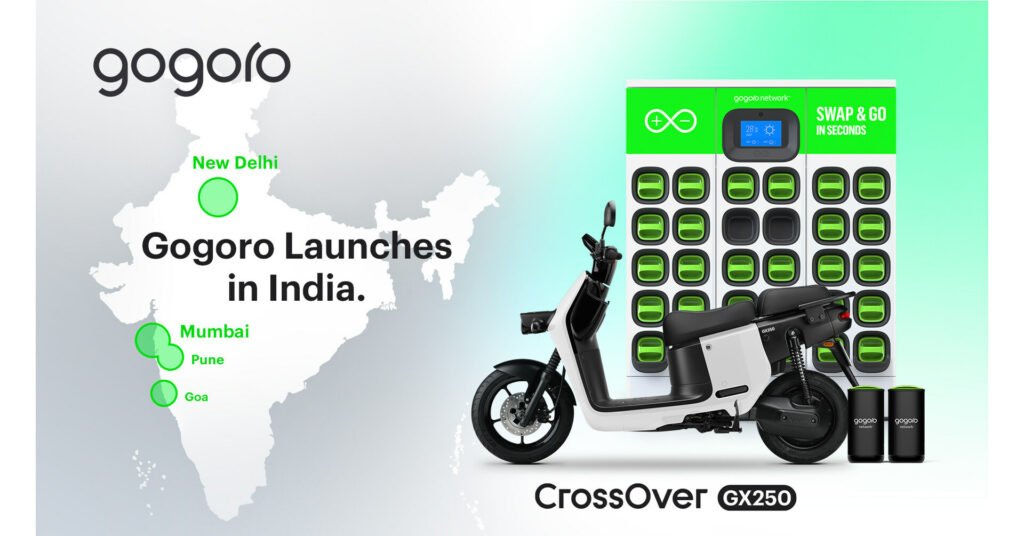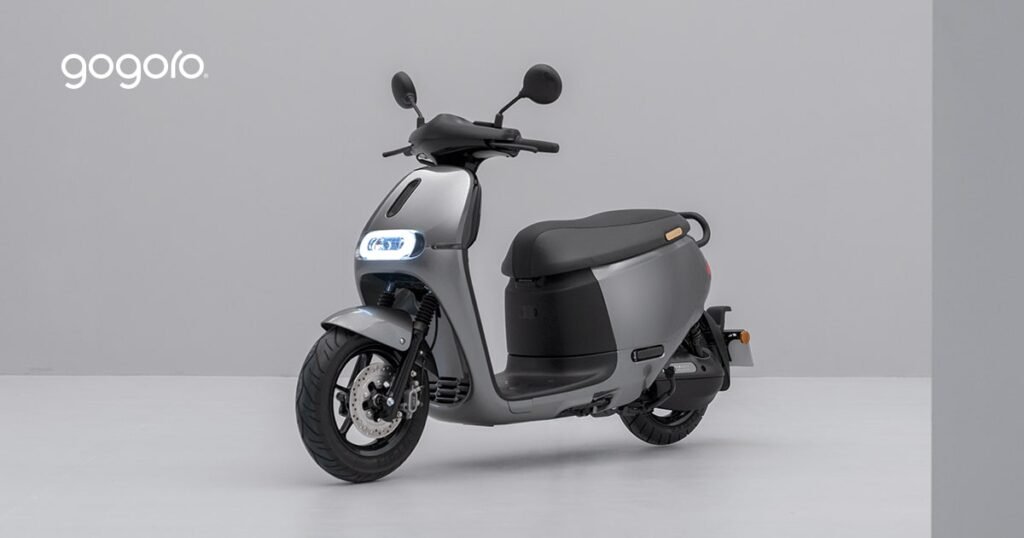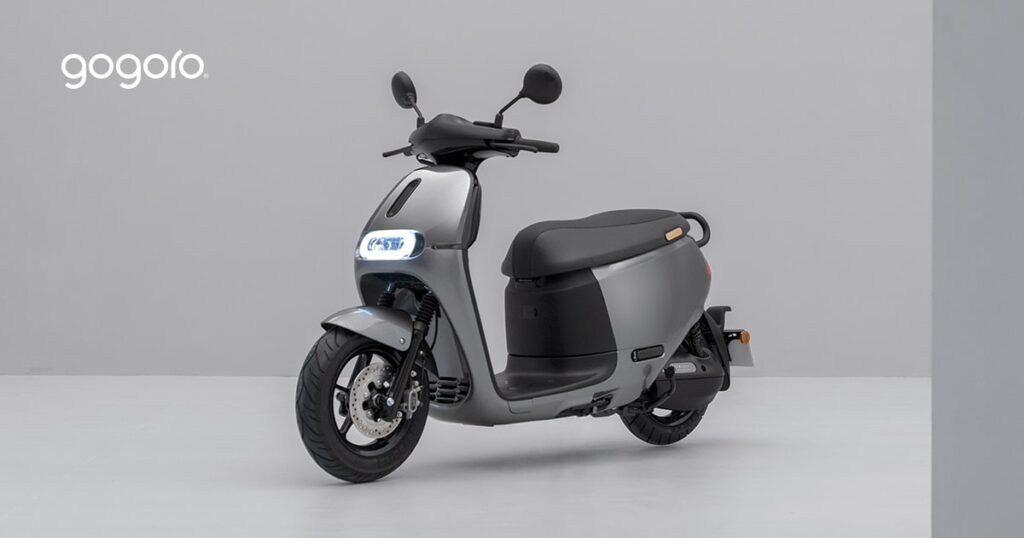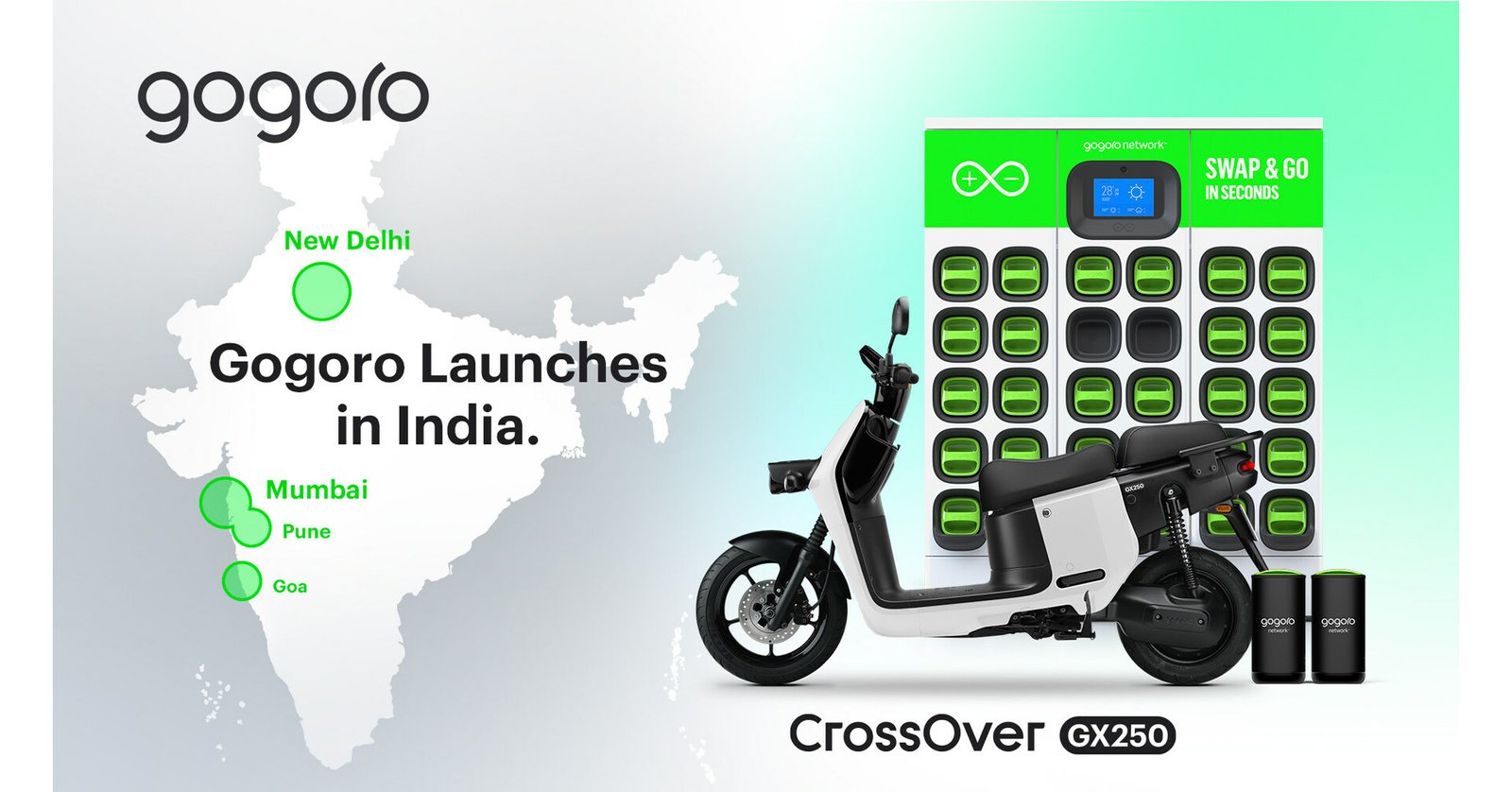
Gogoro, the pioneering Taiwanese electric scooter brand, has officially stepped into the Indian market, unveiling its Crossover series of scooters accompanied by an innovative battery-swapping network. With a strategic eye on India’s flourishing electric vehicle sector, Gogoro aims to redefine the game with its cutting-edge battery-swapping technology.
The Crossover series, featuring the GX250, the 50, and the S models, marks a significant move for Gogoro. The GX250, crafted in India, leads the charge, with the remaining two models slated for a 2024 debut.
Gogoro’s distinguishing factor lies in its battery-swapping technology, a game-changer in contrast to traditional electric scooters. Rather than enduring lengthy recharging sessions, Gogoro’s scooters boast the ability to swap out batteries in mere seconds, addressing a prominent concern in the electric vehicle realm range anxiety.
The initial rollout of Gogoro’s battery-swapping network is set for Mumbai and Pune, becoming accessible to consumers in the second quarter of 2024.
This entrance into the Indian market by Gogoro signifies a monumental leap for the electric vehicle industry. The potential of Gogoro’s innovative battery-swapping technology to alleviate hurdles hindering electric vehicle adoption in India holds considerable weight. Should Gogoro succeed, it could pave the way for other electric vehicle manufacturers to follow suit.
Gogoro’s Visionary Expansion in India’s Electric Vehicle Landscape

Gogoro, the trailblazing Taiwanese innovator in battery swapping for electric two-wheelers, is gearing up for significant expansion in India. Here’s an in-depth overview of their ambitious plans derived from various online sources:
Current Presence and Initial Launch:
- Launched in December 2023: Gogoro made a formal entry into the Indian market with its battery swapping network in Delhi and Goa.
- Initial Focus: Targeting B2B customers, Gogoro has partnered with delivery fleets and bike taxis.
- Locally Manufactured Electric Scooters: Gogoro introduced the CrossOver GX250, the first electric scooter crafted locally to suit Indian needs.
Expansion Roadmap:
- Immediate Expansion: Mumbai and Pune are next on the list, with the network set to roll out in the first half of 2024.
- Extending Reach: Gogoro aims to establish 100 battery-swapping stations across India by the end of 2024, hinting at rapid expansion beyond the initial four cities.
- Consumer Access: While currently focusing on B2B, Gogoro plans to open its network to individual consumers in the second quarter of 2024.
Driving the Expansion:
- Strategic Collaborations: Gogoro’s collaboration with Foxconn involves a significant $1.5 billion investment in a manufacturing facility in Maharashtra, ensuring a consistent supply of locally produced electric scooters.
- Tackling Range Anxiety: The battery-swapping network eliminates the need for extended charging times, a major concern for potential EV adopters.
- Ecosystem Building: Gogoro’s focus extends beyond scooters, aiming to create a robust ecosystem with partners spanning the EV value chain, including battery manufacturers and service providers.
Challenges and Opportunities:
- Competitive Landscape: Ather Energy and Ola Electric present formidable competition, but Gogoro’s unique battery-swapping technology positions it for a potential advantage.
- Government Support: The success of Gogoro hinges on policy initiatives endorsing battery-swapping infrastructure and EV adoption.
- Public Awareness: Educating the public about the benefits of battery swapping and Gogoro’s technology is crucial for widespread adoption.
In summary, Gogoro’s expansion plans in India signal robust growth and a dedicated effort to transform the country’s electric two-wheeler landscape. Their state-of-the-art technology, strategic partnerships, and ecosystem-building approach have immense potential to reshape urban mobility in India.
Gogoro Unveils Three Models in the CrossOver Series: GX250, 50, and S

Gogoro has revealed three models in its CrossOver series: the CrossOver GX250, CrossOver 50, and CrossOver S. While the GX250 is already available in India, the other two models are scheduled for launch in 2024. Here’s a detailed breakdown of their specifications:
CrossOver GX250:
- Indigenous Production
- Range: Up to 250 km on a single charge (with two batteries)
- Maximum Speed: 80 kmph
- Motor: 7.6 kW electric motor
- Battery: Two Gogoro Smart Batteries (with interchangeable option)
- Features: LED illumination, digital instrument cluster, keyless start, smartphone connectivity, reverse mode, optional cruise control
CrossOver 50:
- Range: Up to 50 km on a single charge (with one battery)
- Maximum Speed: 45 kmph
- Motor: 3.1 kW electric motor
- Battery: One Gogoro Smart Battery (with interchangeable option)
- Features: LED illumination, digital instrument cluster, keyless start, smartphone connectivity, reverse mode
CrossOver S:
- Range: Up to 150 km on a single charge (with two batteries)
- Maximum Speed: 90 kmph
- Motor: 8.3 kW electric motor
- Battery: Two Gogoro Smart Batteries (with interchangeable option)
- Features: All features of GX250 plus SSmartcore AI safety system, TCS traction control, optional cruise mode
Additional Notes:
- All CrossOver models feature elevated ground clearance, making them suitable for challenging terrains.
- The battery swapping technology allows for the instantaneous exchange of depleted batteries for fully charged ones at Gogoro GoStation kiosks.
- The CrossOver S stands as the most premium model in the series, featuring additional attributes and superior performance.
Gogoro Scooter Pricing in India:
Gogoro currently opts not to sell scooters directly to consumers in India, focusing instead on building a battery-swapping ecosystem. Gogoro-powered scooters are anticipated to hit the Indian market between 2023 and 2024, with estimated prices as follows:
- Gogoro CrossOver: Starting at Rs. 1.20 Lakh (Projected launch: May 2024)
- Gogoro 2 Series: Rs. 1.50 Lakh (Projected launch: Soon)
- Gogoro Supersport: Price yet to be disclosed
It’s important to note that these are approximate ex-showroom prices, with on-road costs varying based on taxes and insurance. Additionally, Gogoro scooters may adopt various ownership models, such as financing or subscriptions, influencing the final cost.
Gogoro Battery Swapping Service Pricing in India:

Gogoro doesn’t directly charge consumers for using their battery swapping service. Instead, the cost is usually factored into the pricing for ride-sharing services or delivery companies employing Gogoro-powered scooters.
While there are hints of Gogoro introducing flexible subscription plans for individual users in the future, official details are yet to be disclosed. Gogoro’s battery-swapping technology holds the potential to bring several key benefits to the Indian market, particularly in addressing challenges related to electric vehicle (EV) adoption and urban mobility.
Key Advantages of Gogoro’s Technology in the Indian Market:
1. Increased EV Adoption:
- Convenience and Speed: Swapping batteries is significantly faster than traditional charging, reducing downtime for riders and boosting operational efficiency for fleets.
- Lower Costs: Battery swapping eliminates the need for expensive home charging infrastructure, lowering the upfront cost of owning an EV.
- Improved Range Anxiety: The readily available network of swapping stations removes range anxiety, a major barrier for potential EV buyers, especially in areas with limited charging infrastructure.
2. Enhanced Urban Mobility:
- Reduced Air Pollution: Widespread EV adoption, facilitated by Gogoro’s technology, can significantly reduce air pollution in Indian cities, leading to improved public health and environmental benefits.
- Congestion Reduction: Efficient and seamless electric mobility solutions can potentially decrease traffic congestion and improve overall traffic flow in urban areas.
- Economic Growth: Gogoro’s ecosystem presents opportunities for job creation in battery manufacturing, network operation, and related services, contributing to economic growth in India.
3. Additional Benefits:
- Open Network: Gogoro’s platform is open to various vehicle manufacturers and battery providers, fostering competition and innovation within the EV ecosystem.
- Data-driven Insights: Gogoro’s technology generates valuable data on battery usage and rider behavior, enabling informed decision-making for optimizing the network and improving efficiency.
- Scalability and Adaptability: The modular nature of the swapping system allows for easy expansion and adaptation to meet diverse needs across different cities and regions in India.
While these advantages are promising, challenges remain. Establishing an extensive network of swapping stations and ensuring widespread adoption by vehicle manufacturers and riders will be pivotal for Gogoro’s success in India. Additionally, addressing concerns related to affordability and potential infrastructure limitations in rural areas is imperative for broader outreach.
In essence, Gogoro’s technology holds strong potential to expedite EV adoption and enhance urban mobility in India. The effectiveness of its implementation hinges on effectively addressing prevailing challenges and collaborating synergistically with stakeholders across the Indian EV ecosystem.
